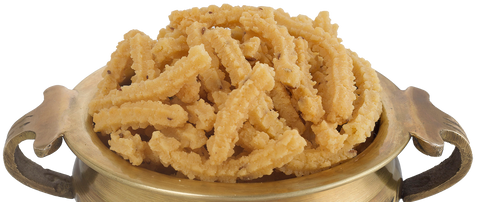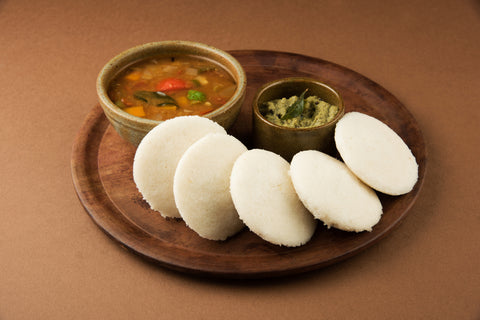The crunchy, buttery goodness of the Murukku is something that every South Indian is familiar with. A festive staple and the best coffee-time snack, this delicious preparation has made its way into the hearts and homes of people across India.
Now, with Deepavali around the corner, we can’t help but wonder how this rather simple snack became an integral part of celebrations across the country. What makes it special, and where did it come from? Let us take a look into the history that lies in every twist of the yummy murukku.
How It All Began
Rice flour and urad dal have been considered auspicious for ages. Initially, festivities began with sweets made with a mix of rice flour, urad dal and jaggery. Then, as people become more experimental, the ingredients were ground into a semi-solid dough that was pressed into flat papads to make snacks. This led to the addition of cumin seeds, pepper and other spices to make a dough that was twisted into interesting shapes and fried. And thus, the Murukku as we know it today was born.
The origin of Murukku is attributed to the state of Tamil Nadu. The word Murukku means ‘twisted’, owing to the shape of the dish. In the earlier days, before the invention of the Murukku press, preparing the snack was a family affair. While the women prepared the dough and fried the Murukku, the men helped wind them into their trademark shape.
Which Came First the Chakkali or the Murukku?
This is an age-old debate. Although the words Chakkali and Murukku are used interchangeably, they are slightly different. The former uses besan as one of the main ingredients. To answer the above question, let us make a quick reference to the Supa Shastra written by Mangarasa. This is a treatise about food that was written in the early 1500s. When it was translated to Marathi in the 19th Century by Ramchandra Gupte, a recipe similar to the Murukku was revealed.
Then, different versions were made using local grains available across the country, replacing the urad dal. Today, the Murukku in its many forms is available all over the country. It is also known by different names like Dankali in Orissa, Janthukulu in Andgrapradesh and Chakri in Konkani.
Murukku Travels the World
Not only is Murukku popular in India, it also has a substantial presence in places like Singapore, Malaysia, Fiji and Myanmar. In fact, it has a special name in Burma, which is sagalay gway. The name roughly translates to baby sparrow coils. This snack is commonly served with a local dish known as dawei mont di.
There is no doubt that the Murukku has made an important place in Indian cuisine and culture. You also see it permeating into language and literature. One example of this is the popular Tamil idiom, ‘Pallada Thathavukku Murukku Venumam’. The literal translation is the toothless grandfather wants murukku denoting that someone aspires for something that is of no use to them.
Experience a bit of history with Adukale’s special Murukku made with our family’s heirloom recipe. Passed across generations, our Murukku is a testimony to our love for traditional foods and their irreplaceable role in our cuisine.







Comments (0)
There are no comments for this article. Be the first one to leave a message!